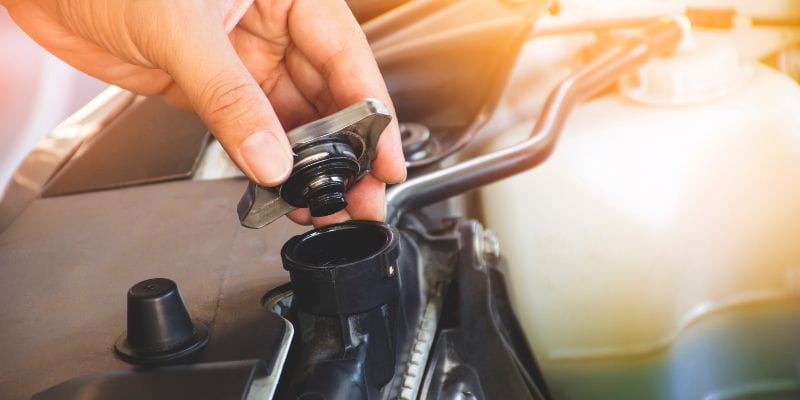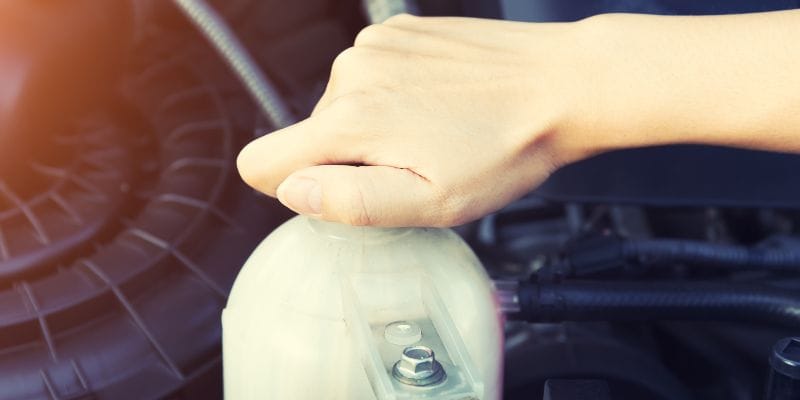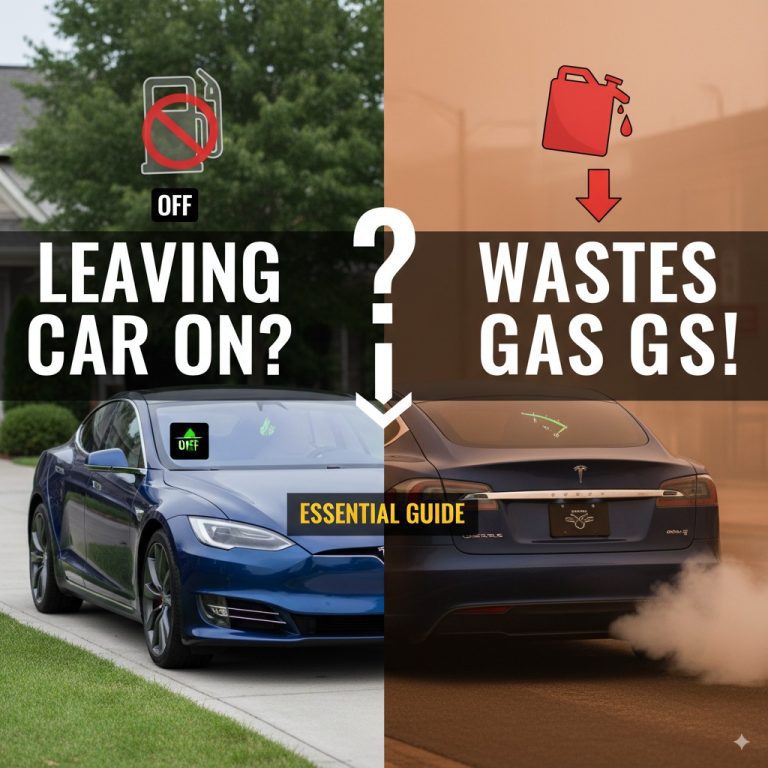How to Check Honda Civic Coolant Level: Master the Vital Task
To check the Honda Civic coolant level, remove the radiator cap when the engine is cool and check the coolant level against the full mark on the overflow tank. This process ensures proper maintenance of the cooling system, preventing overheating and engine damage.
Regularly checking the coolant level is crucial for the optimal performance and longevity of the Honda Civic. It helps to identify any potential leaks or inadequate coolant levels, which could lead to engine overheating. By following simple steps to assess the coolant level, you can guarantee the smooth running of your Honda Civic.
Regular maintenance and attention to the coolant level will help to keep the engine running at its best.
Importance Of Checking Coolant Level In Honda Civic
Maintaining the proper coolant level in your Honda Civic is crucial for ensuring optimal engine performance. To check the coolant level, wait for the engine to cool, locate the coolant reservoir, and inspect the level against the markings. Regularly monitoring and topping up the coolant will help prevent overheating and engine damage.

Signs Of Low Coolant Level
Recognizing Warning Indicators
When it comes to your Honda Civic, keeping an eye on its coolant level is crucial for maintaining optimal engine performance. Low coolant level can lead to serious issues if not addressed promptly. To recognize warning indicators of low coolant level, here are some signs to watch for:
- Temperature Gauge: If you notice the temperature gauge consistently running higher than normal, it could indicate low coolant level.
- Steam or Smoke: An overheated engine may release steam or smoke from the hood, signaling a potential coolant problem.
- Coolant Leakage: Spotting puddles of coolant under the vehicle or around the engine is a clear warning sign.
- Strange Odor: A sweet smell when the engine is running could be a sign of leaking coolant.
Impact On Engine Performance
Ensuring that your Honda Civic maintains the proper coolant level is essential to prevent any negative impact on engine performance. Low coolant level can lead to several issues:
- Overheating: Without adequate coolant, the engine can overheat, leading to potential damage and decreased performance.
- Corrosion: Insufficient coolant could result in corrosion within the cooling system, causing long-term damage.
- Increased Wear: Lack of proper cooling can lead to increased wear and tear on engine components, impacting overall longevity.
Step-by-step Guide To Checking Coolant Level
When it comes to keeping your Honda Civic running smoothly, checking the coolant level is an essential maintenance task. Coolant is responsible for regulating the temperature of your engine, preventing it from overheating or freezing. In this step-by-step guide, we’ll walk you through the process of checking and topping up the coolant level in your Honda Civic.
Preparation And Safety Measures
- Before starting, ensure that the engine is cool to avoid the risk of burns from hot coolant.
- Ensure that the vehicle is parked on a level surface to get an accurate reading of the coolant level.
- Use safety goggles and gloves to protect your eyes and skin from potential coolant spills.
Locating The Coolant Reservoir
The coolant reservoir in a Honda Civic can usually be found near the front of the engine bay. It is a translucent plastic tank with a clearly marked “Max” and “Min” level indicators.
How To Visually Assess The Coolant Level
First, visually inspect the coolant level through the transparent reservoir. The coolant should be between the “Max” and “Min” level markers. If it’s below the “Min” mark, you’ll need to top it up.
Using A Dipstick Or Coolant Level Sensor
Some Honda Civic models are equipped with a dipstick or a sensor for checking the coolant level. Follow your vehicle’s specific instructions to use the dipstick or sensor to determine the coolant level accurately.
Top-up Or Refill Process
- Open the coolant reservoir cap cautiously, taking safety precautions to prevent burns from any residual pressure.
- If the coolant level is low, add a mix of distilled water and coolant to reach the appropriate level. The ratio of water to coolant should follow the manufacturer’s recommendations.
- Once the coolant level is topped up, securely reseal the reservoir cap to prevent leaks or spills.
- Run the engine to allow the coolant to circulate and settle, and recheck the level after a few minutes to ensure it remains at the proper range.
Understanding The Coolant System
Components And Functions
The coolant system in your Honda Civic works to maintain the optimal operating temperature of the engine. It is composed of several key components, each with its specific function:
- The radiator: Acts as a heat exchanger, cooling the hot coolant passing through it before returning it to the engine.
- The water pump: Circulates the coolant throughout the engine and radiator to dissipate heat.
- The thermostat: Regulates the flow of coolant to maintain the correct engine temperature.
- The coolant reservoir: Acts as a storage tank for excess coolant and provides a visual indicator of the coolant level.
Importance Of Coolant Mixture And Quality
The coolant mixture used in the Honda Civic is crucial for maintaining the proper functioning of the coolant system. It serves several important purposes:
- Heat transfer: Proper coolant mixture ensures efficient heat transfer, preventing the engine from overheating.
- Corrosion protection: Quality coolant contains additives that prevent corrosion and extend the lifespan of the cooling system components.
- Antifreeze properties: A correct coolant mixture prevents the coolant from freezing in low temperatures, safeguarding the engine during cold weather.
Always ensure that the coolant used meets the manufacturer’s specifications for quality and ratio, as this directly affects the performance and longevity of the coolant system in your Honda Civic.
Bleeding And Purging The Coolant System
Bleeding and purging the coolant system is a crucial maintenance task that ensures the efficient operation and longevity of your Honda Civic. This process helps to remove air pockets and ensure proper circulation of coolant throughout the engine, preventing overheating and potential damage. Understanding the importance and benefits of properly bleeding and purging the coolant system is essential for maintaining the optimal performance of your vehicle.
Importance And Benefits
Properly bleeding and purging the coolant system is important to prevent overheating, engine damage, and premature wear of components. Air pockets within the system can disrupt the flow of coolant, leading to hot spots and inefficient heat dissipation. By removing these air pockets, you ensure that the coolant can effectively regulate the engine’s temperature, enhancing performance and overall longevity.
Step-by-step Process
Follow these steps to bleed and purge the coolant system of your Honda Civic:
- Ensure the engine is cool before proceeding.
- Locate the coolant bleed bolt or valve, usually found near the thermostat housing or on the radiator.
- With a container placed below the bleed point, slowly loosen the bolt or valve to release any trapped air in the system.
- Keep adding coolant as needed to maintain the proper level in the reservoir throughout the bleeding process.
- Tighten the bleed bolt or valve once only coolant, without any air bubbles, is released.
- Top off the coolant reservoir to the recommended level.
- Start the engine and let it idle, periodically checking for any leaks and ensuring the coolant level remains constant.
- Monitor the temperature gauge to verify that the engine is operating at the proper temperature.
Following these steps will ensure that your Honda Civic’s coolant system is properly bled and purged, promoting optimal performance and longevity.

Maintenance And Troubleshooting Tips
Regular Checks And Precautions
Regularly checking the coolant level in your Honda Civic is essential to ensure the smooth operation of the vehicle’s cooling system. By performing this simple task, you can prevent potential overheating issues and maintain the engine’s performance at an optimal level.
Here’s a quick guide to check the coolant level in your Honda Civic:
- Ensure the engine is cool before opening the hood to avoid any risk of burns.
- Locate the coolant reservoir, usually situated near the front of the engine compartment. Refer to your vehicle’s manual if necessary.
- Check the coolant level against the markings on the reservoir. The level should be between the minimum and maximum indicators.
- If the level is below the minimum mark, add a mixture of coolant and water as per the manufacturer’s recommendation.
- Tightly secure the reservoir cap to prevent any leaks.
Addressing Common Coolant System Issues
Aside from regular coolant level checks, it’s crucial to be aware of common coolant system issues that may arise in your Honda Civic. By promptly addressing these issues, you can prevent potentially costly repairs and maintain the vehicle’s reliability.
Here are some common coolant system issues that you should watch out for:
- Coolant Leaks: Inspect for any visible leaks around the hoses, radiator, or water pump. Address any leakage promptly to prevent coolant loss and engine overheating.
- Overheating: If you notice the temperature gauge rising above the normal range, it could indicate a problem with the cooling system. Check for blockages, faulty thermostat, or a malfunctioning fan.
- Rust and Corrosion: Over time, the coolant can become contaminated with rust and debris, leading to corrosion within the system. Regular coolant flushes can help prevent this issue.
- Low Coolant Warning: If the dashboard warning light indicates low coolant levels, it’s crucial to investigate the cause and address it promptly to avoid potential engine damage.
Frequently Asked Questions Of How To Check Honda Civic Coolant Level
How Do I Check My Honda Civic’s Coolant Level?
To check your Honda Civic’s coolant level, ensure the engine is cool, then locate the coolant reservoir and observe the level. It should be between the minimum and maximum markings. If it’s below the minimum, add a 50/50 mixture of coolant and water to the reservoir.
What Type Of Coolant Does A Honda Civic Use?
Honda Civics typically use a specific type of coolant, such as Honda Long Life Antifreeze/Coolant Type 2. It’s important to use the recommended coolant to ensure optimal performance and longevity of the vehicle’s cooling system.
When Should I Check My Honda Civic’s Coolant Level?
It’s advisable to check your Honda Civic’s coolant level regularly, especially before long trips or during routine maintenance. It’s essential to ensure the coolant level is within the recommended range to prevent overheating and potential damage to the engine.
Conclusion
Ensuring the proper levels of coolant in your Honda Civic is crucial for optimal performance. By following these simple steps, you can easily check and maintain the coolant levels in your vehicle. Regularly checking the coolant level will help prevent overheating and potential engine damage, keeping your Honda Civic running smoothly for years to come.







